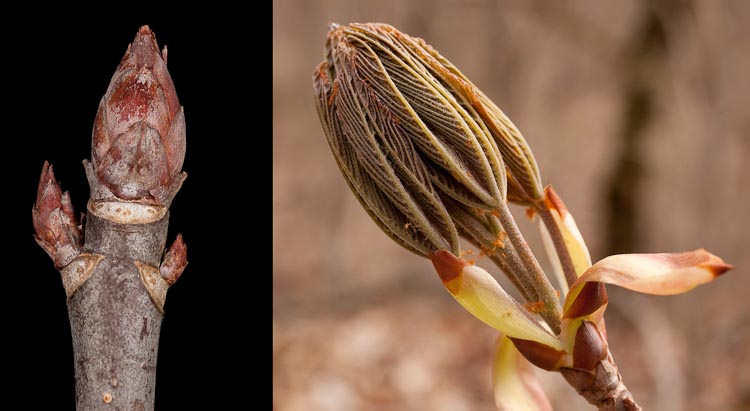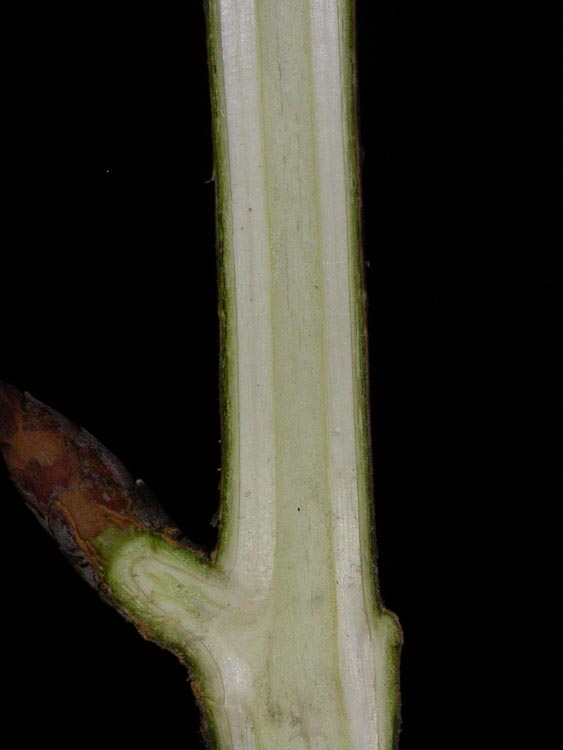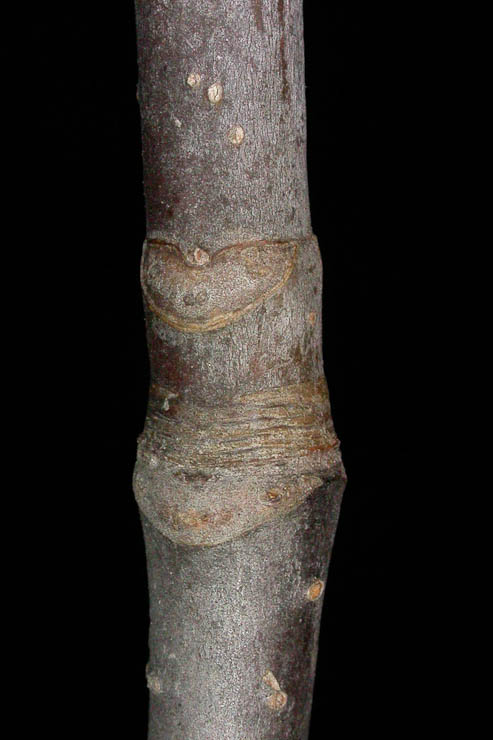Ohio bickeye (buckeye, whatever) (Aesculus glabra)
Buckeye twigs are stout, with prominent lenticels, and a true terminal bud with imbricate (overlapping) scales. This is one of our earliest trees to leaf out in the spring (and to drop leaves in fall).
Ohio buckeye is also sometimes called “foetid buckeye,” meaning “stinky buckeye because the broken twigs smell skunk-like. Gently scratch and sniff the image below. (I installed the WordPress “Smellovision” plug-in). Note also the large leaf scars, oppositely arranged.
There once was a nice memory clue for trees and shrubs having opposite leaves: MADCAP HORSE:
M= Maple; A= Ash; D= Dogwood, and C stood for “Caprifoliaceae,” a family of mainly shrubs that includes honeysuckle, and until recently included virburnum and elderberry. Alas, no longer, as viburnum and elderberry have been moved to a family called the Adoxaceae. H=”horsechestnut,” i.e., the Hippocastanaceae, which is the family to which buckeye belongs. MADCAPADOXHORSE? The simplified version MADBUCK works almost as well, but just for trees.
The pith of buckeye is moderately large, white, continuous and homogenous.
Here’s an interesting thing. Bud scale scars that mark the boundary between growing seasons.





